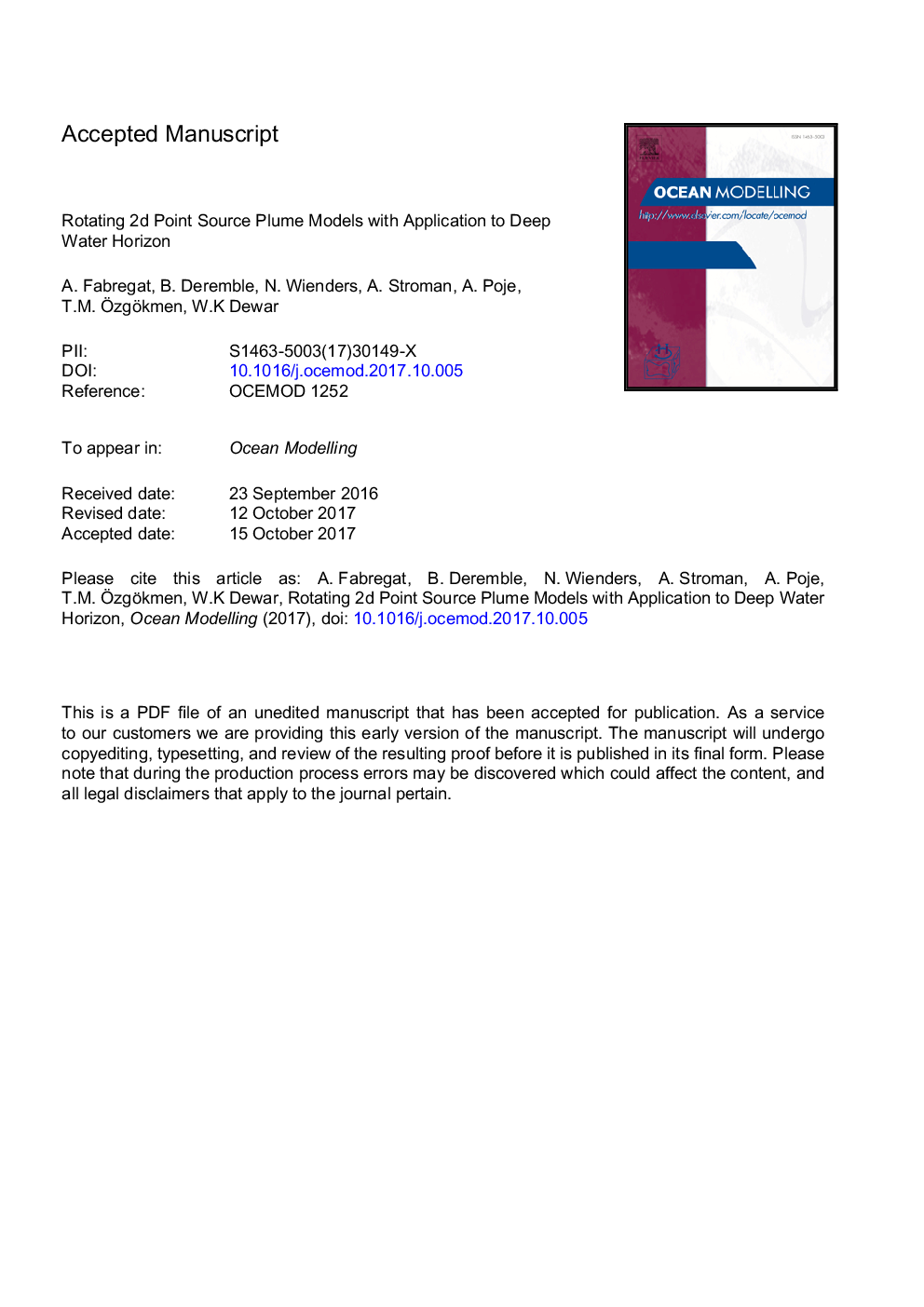| Article ID | Journal | Published Year | Pages | File Type |
|---|---|---|---|---|
| 8886562 | Ocean Modelling | 2017 | 61 Pages |
Abstract
The 2010 Deepwater Horizon (DwH) accident in the Gulf of Mexico has renewed oceanographic interest in point source buoyant convection. The present paper applies modern numerical techniques to study this problem, focussing specifically on the DwH event. The gas/oil/seawater nature of the problem requires a 'multiphase' approach, which is relatively unfamiliar in physical oceanography, although applications are becoming more common. The model is cast in an Eulerian framework and includes feedbacks between the convection and the environment, unlike past oil/gas plume simulations that adopt a semi-passive, Lagrangian approach. Fully three dimensional (3d) simulations are too computationally demanding for practical multi-day use, so a two-dimensional (2d) radially symmetric model is developed from the equations and calibrated to the 3d results. Both the 2d and 3d solutions show the somewhat unexpected result that oil/bubble plumes modelled after the DwH event are strongly affected by rotation and exert a considerable dynamic feedback on the ambient. These effects are not typically included in classical oil/gas plume models.
Related Topics
Physical Sciences and Engineering
Earth and Planetary Sciences
Atmospheric Science
Authors
A. Fabregat, B. Deremble, N. Wienders, A. Stroman, A. Poje, T.M. Ãzgökmen, W.K. Dewar,
